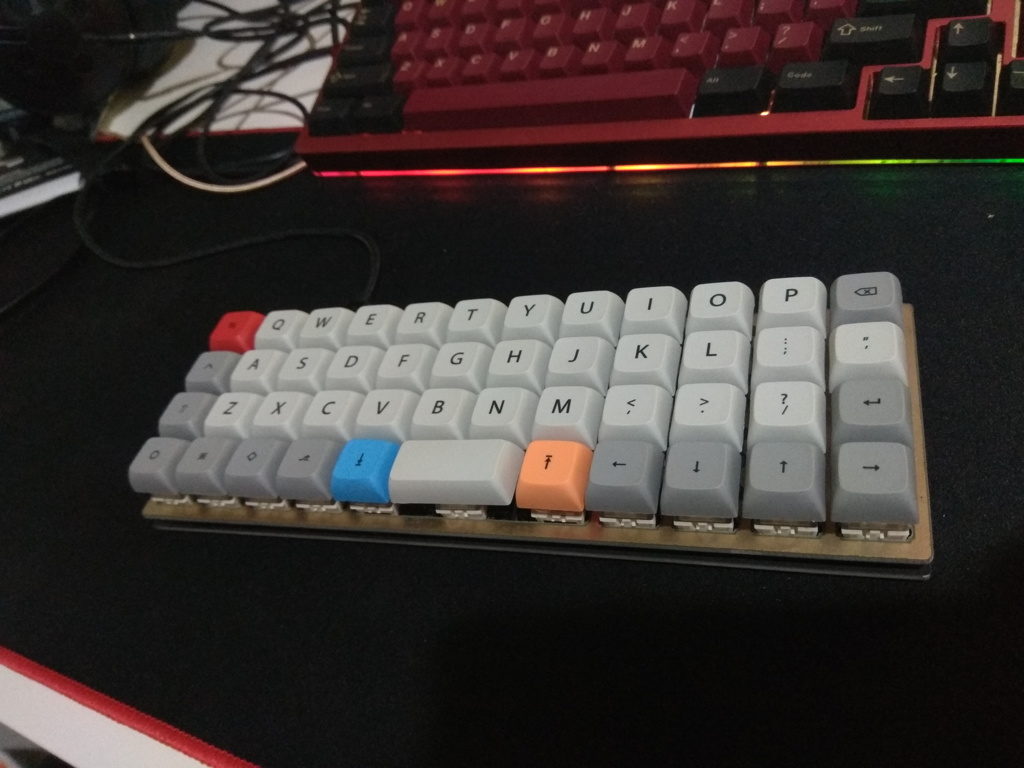So, I finally received my Planck keyboard and I’ve been using them on and off for over a week so I thought I’d write a quick post about it just because I haven’t written anything this week.

For those of you who don’t know, the Planck is a 40% ortholinear keyboard – which means the keys aren’t staggered like a regular keyboard (look at how A is slightly to the right of Q, Z is slightly to the right of A and so on), the keys are lined up in a grid instead. This is supposedly better in terms of ergonomics, but since I haven’t had any issues typing on staggered layouts all these years, I don’t really feel the difference. However, this grid layout introduces a new problem for me (which I assume will go away with time) – muscle memory.
Maybe I’m just a slow learner but I’m having a lot of trouble adapting to the Planck layout. I find myself hitting the wrong keys even if I look at the keyboard to type just because my hands automatically reach out to hit the keys when I have a word to type. It gets annoying when you have to use backspace multiple times while writing a single sentence. Because of this issue, I find myself not using the Planck as much as I’d like to. Other than that, I have no qualms about the keyboard. Initially I had some trouble remapping the keys due to a problem with the QMK configurator site, but since that has been sorted out, everything is fine and dandy, the way I like it.

In terms of build quality – you get what you pay for. I bought the EOTW (easy on the wallet) version of the board because I wanted to try out the layout, and for how cheap it was, I thought it was worth it. The EOTW plates are gorgeous, and so is the PCB. Definitely one of the nicest looking PCBs I’ve seen for a keyboard. The form factor is great – I love how light and tiny it is, though it might feel a little fragile due to the lack of a case (which can be easily solved by spending more money).

Overall – at least based on my short experience with the Planck, I think ortho is not for me. That being said – for people who have issues using staggered layouts, this could be a viable option for a more ergonomic keyboard. At this point in time, I see no benefits to relearning how I type so I don’t think I’ll be an ortho user in the future. That being said, I’m still going to continue using it over the next few months. If my typing doesn’t improve on it, I’ll just turn it into a giant macropad or try to flip it.

Leave a Reply